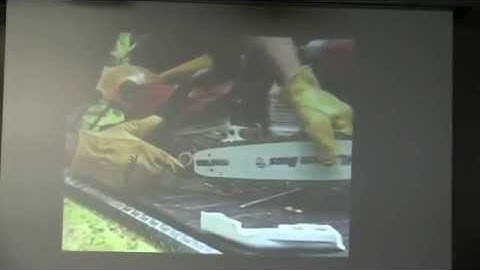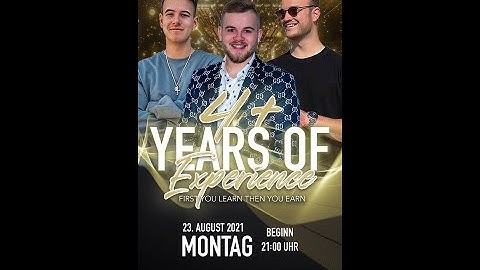Without the power to tax, a government will have few resources to do anything. It cannot effectively police its citizens, protect its people from foreign invaders, or regulate commerce because it cannot pay the associated costs. Discarding the Articles of Confederation—which merely allowed Congress to ask states for money—the drafters effectively adopted a taxing document – the U.S. Constitution. The Constitution gave Congress the power to lay taxes and also to collect them. Taxes—more precisely, the money they provide—make all other government actions possible. One might think about that in relation to present-day loose confederations such as the United Nations, NATO, and the European Union. Without the enforceable power to tax, they are necessarily subject to the potentially fleeting willingness of members to contribute. The U.S. taxing power, while very broad, has important limitations. First, direct taxes must be apportioned, a very difficult requirement. Second, duties, imposts, and excises must be uniform—an easy-to-meet standard, but one which, if ignored, can be fatal to a statute. See, Steven J. Willis & Hans G. Tanzler IV, Affordable Care Act Fails for Lack of Uniformity, 27 U. Fla. J. Law Pub. Pol’y 81 (2016). Third, bills for “raising revenue” must originate in the House. Although “raising revenue” and “taxing” are not fully the same, the overlap is substantial and can have important consequences. See, Steven J. Willis & Hans G. Tanzler IV, The Wrong House: Why “Obamacare” Violates the U.S. Constitution’s Origination Clause, Wash. Leg. Found. Critical Legal Issues Number 190 (2015). Fourth, under the Sixteenth Amendment, “income taxes” apply only to “income” “derived” “from a source.” What constitutes an “income tax,” let alone “income,” and what “derived” “from a source” means have been subject to more than one hundred years of debate. Essentially, a taxpayer must experience an “accession to wealth” from an event such as a sale, exchange, or receipt. See, Steven J. Willis & Nakku Chung, Of Constitutional Decapitation and Healthcare, 128 Tax Notes 169, 189-93 (2010). A mere increase in value is not “income” and thus cannot be taxed to humans. For entities, such as corporations, however, a tax on value increases is not an income tax; instead, it is an excise subject merely to uniformity. Flint v. Stone Tracy Co. (1911). To summarize: the power to tax humans differs substantially from the power to tax entities. Fifth, taxes exist in the presence of various power limitations and personal rights found in the Constitution. Although the application of a tax surely cannot violate the Equal Protection Clause, the Supreme Court has more generally held that the Due Process Clause does not restrict the taxing power. A. Magnano Co. v. Hamilton (1934) (“Except in rare and special instances, the due process of law clause contained in the Fifth Amendment is not a limitation upon the taxing power conferred upon Congress by the Constitution. Brushaber v. Union Pacific Railroad Co. (1916). And no reason exists for applying a different rule against a state in the case of the Fourteenth Amendment.”) Recognizing the lack of constitutional due process protections, Congress statutorily created “collection due process” limitations. See, Steven J. Willis & Nakku Chung, No Healthcare Penalty? No Problem: No Due Process, 38 Am. J. Law & Med. 516 (2013). Those important protections, however, are subject to the whim of future Congresses.
This essay is part of a discussion about the Taxing Clause with Neil S. Siegel, David W. Ichel Professor of Law and Professor of Political Science, Duke Law School. Read the full discussion here. Sixth, arguably taxes must be imposed “for the general welfare.” A close reading of Article One, Section Eight suggests the limitation actually restricts the spending power rather than the taxing power. Interestingly, in NFIB v. Sebelius (2012), Justice Ginsburg spoke of the general welfare restriction as applying both to taxing and spending. In contrast, Chief Justice Roberts twice discussed the restriction, but only in terms of the spending power. In any event, this restriction is easily met and thus largely inconsequential. Lastly, the reach of taxing power limitations remains partially unclear, even 225 years after the adoption of the Constitution. The Federalist Papers spoke of two broad tax categories: direct and indirect, with direct being subject to apportionment and indirect being subject to uniformity. The Constitution, however, does not quite say that. Instead, it first grants Congress broad taxing power. It then requires that direct taxes be apportioned. Next, it requires that duties, imposts, and excises be uniform. It never uses the term “indirect.” This leaves open the question of whether some other type of tax is possible, which need be neither apportioned nor uniform. In 1796, the Supreme Court suggested, but did not hold, that any such “other” tax must be uniform. Hylton v. United States (1796) (Chase, J.). Over the past two hundred years, the Court has routinely spoken of taxes as being either direct or indirect; however, it has yet to consider a case holding “indirect taxes” as encompassing duties, imposts, and excises and nothing more. As a result, the question remains at least technically unresolved. Arguably, the Affordable Care Act tax is just that: a newly found type of tax. In NFIB, the Supreme Court held it was a tax, but not a direct one. Traditionally, duties, imposts, and excises each involve some activity: duties and imposts involve imports and transactions, while excises involve an activity, the use of something, or the exercise of a privilege. Not having health insurance does not seem to fit within any of those categories because it involves not doing something rather than doing something. The commerce clause holding in NFIB rested on inactivity not being “commerce.” Whether the Court will apply analogous reasoning to the meaning of “duties, imposts, and excises” is uncertain but plausible. The ACA tax on the lack of insurance need not be apportioned because the Court said so in 2012. The tax appears not to be uniform; however, whether it must be uniform is less clear and remains to be litigated.

The Continental Congress adopted the Articles of Confederation, the first constitution of the United States, on November 15, 1777, but the states did not ratify them until March 1, 1781. The Articles created a loose confederation of sovereign states and a weak central government, leaving most of the power with the state governments. Once peace removed the rationale of wartime necessity the weaknesses of the 1777 Articles of Confederation became increasingly apparent. Divisions among the states and even local rebellions threatened to destroy the fruits of the Revolution. Nationalists, led by James Madison, George Washington, Alexander Hamilton, John Jay, and James Wilson, almost immediately began working toward strengthening the federal government. They turned a series of regional commercial conferences into a national constitutional convention at Philadelphia in 1787.
John Jay to George Washington, March 16, 1786
Shortly after the revolutionary war began at Concord and Lexington, Benjamin Franklin submitted this plan for a united colonial confederation or American republic to the Continental Congress on July 21, 1775. Thomas Jefferson, a fellow delegate, annotated his copy of Franklin’s plan, which began a national debate on the creation of an American Republic.
 Benjamin Franklin. Plan for a Confederation, July 21, 1775. Printed document annotated by Thomas Jefferson. Thomas Jefferson Papers, Manuscript Division. Library of Congress (46.01.01) [Digital ID#s us0046a_2, us0046a, us0046a_1] Bookmark this item: //www.loc.gov/exhibits/creating-the-united-states/road-to-the-constitution.html#obj0
Writing the Articles of Confederation
In 1781, James Madison (1751–1836) asked Thomas Jefferson (1743–1826) for his account of those tumultuous pivotal days in which the Declaration of Independence and the Articles of Confederation were drafted. Recognizing the importance of the process for the Revolution and for posterity, Thomas Jefferson prepared his notes of the proceedings in Congress, June 7–August 1, 1776. On this page, Jefferson’s notes reflect his interest in Article XVII, about representation in Congress.
Bookmark this item: //www.loc.gov/exhibits/creating-the-united-states/road-to-the-constitution.html#obj1
After undergoing more than a year of planning and compromise in the Continental Congress, the Articles of Confederation and Perpetual Union Between the States was finally ready to be sent to the states for ratification. Nearly four years would pass before all thirteen states had ratified the document—Maryland being the last to ratify on March 1, 1781—and it was put into action. The Articles provided for a one-house legislature, a weak executive, no national power of taxation, a lack of standard currency, and voting by state—flaws that would eventually lead to its failure.
 United States Continental Congress. Articles of Confederation and Perpetual Union Between the States. . . . Lancaster: Francis Bailey, 1777. Pamphlet. Rare Book and Special Collections Division, Library of Congress (048.05.00) [Digital ID# us0048_05] Bookmark this item: //www.loc.gov/exhibits/creating-the-united-states/road-to-the-constitution.html#obj17
The Articles of Confederation and Perpetual Union was the first constitution of the United States. After more than a year of consideration, it was submitted to the states for ratification in 1777, but not enough states approved it until 1781. The Articles provided for a weak executive branch, no national power of taxation, and voting by states.
 [United States Continental Congress]. Articles of Confederation and Perpetual Union Between the States of. . . . Williamsburg, Virginia: J. Dixon & W. Hunter, 1778. Rare Book and Special Collections Division, Library of Congress (048.04.00) [Digital ID# us0048_04] Bookmark this item: //www.loc.gov/exhibits/creating-the-united-states/road-to-the-constitution.html#obj2
After Maryland’s ratification established the Articles of Confederation as the first United States constitution, Thomas Rodney (1744–1811), a delegate to the Continental Congress from Delaware, recorded in his diary on March 1, 1781, that “the Completion of this grand Union & Confederation was announced by Firing thirteen Cannon on the Hill” in Philadelphia. Bookmark this item: //www.loc.gov/exhibits/creating-the-united-states/road-to-the-constitution.html#obj2b
Between March 1, 1781, when the Articles of Confederation were enacted, and November 5, 1781, when a new Congress convened, Samuel Huntington and Thomas McKean served briefly as presidents of the body. Samuel Johnston had declined the presidency when elected. When the first Confederation Congress met on November 5, 1781, it elected John Hanson (1715–1783), delegate from Maryland, as its president. In this letter, Charles Thomson (1729–1824), secretary of Congress, informs George Washington of Hanson’s election. According to the Articles, the president of the Congress presided only over Congress; George Washington, chosen after the ratification of the Federal Constitution, was the first president of the United States.
 Letter from Charles Thomson to George Washington, November 5, 1781. Manuscript. George Washington Papers, Manuscript Division, Library of Congress (48.01.00) [Digital ID# us0048_01] Bookmark this item: //www.loc.gov/exhibits/creating-the-united-states/road-to-the-constitution.html#obj3 Back to Top
With these words, Henry Knox (1750–1806), George Washington’s former artillery commander, described to Washington an uprising of indebted farmers and laborers in Massachusetts led by Daniel Shays in 1786 and 1787. Shays’ Rebellion was caused by excessive land taxation, high legal costs, and economic depression following the American Revolution, which threatened the stability of the Confederation. The protest was one of several that exposed the need to curb the excesses and inequities of state governments and led men such as Knox and Washington to seek remedies in a stronger national government. Bookmark this item: //www.loc.gov/exhibits/creating-the-united-states/road-to-the-constitution.html#obj9
Abigail Adams (1744–1818) predicted that the 1786 rebellion in Massachusetts led by Daniel Shays (ca. 1741–1825) “will prove sallutary to the state at large,” even though it was led by “ignorant, wrestless desperadoes, without conscience or principals.” Many in the United States believed a strong national government was needed to prevent such local uprisings against legitimate government. Shays and Job Shattuck (1736–1819), both veterans of the Revolutionary Army and leaders of the 1786 rebellion, are depicted in this scene. Bookmark this item: //www.loc.gov/exhibits/creating-the-united-states/road-to-the-constitution.html#obj10
In September 1786, delegates from five states met in Annapolis, Maryland, ostensibly to discuss barriers to trade under the Articles of Confederation. The commissioners decided that not enough states were represented to make any substantive agreement. Despite the failure of the “Annapolis Convention” to attract broad support, the nationalist delegates who had attended it, including Alexander Hamilton and James Madison, pressed on with a recommendation for a national convention to address defects in the Articles of Confederation.
 Letter from James Madison to James Monroe, September 11, 1786. Manuscript. James Madison Papers, Manuscript Division, Library of Congress (51.01.00) [Digital ID# us0051_01] Bookmark this item: //www.loc.gov/exhibits/creating-the-united-states/road-to-the-constitution.html#obj12 Back to Top
The Northwest Ordinance, adopted by the Confederation Congress on July 13, 1787, established a precedent for the organization of territories outside of the nation’s original thirteen states. A minimum of five territories or states were to be created. Each was to have a republican government with an executive, legislative council (upper house), assembly, and judiciary. Not only was the territory north and west of the Ohio River to be settled by Americans and admitted into full statehood in the union, but the Ordinance stipulated that those territories would be free from slavery or involuntary servitude and have a bill of rights.
 United States Continental Congress. Ordinance for the Government of the Territory of the U.S. Northwest of the Ohio. New York, 1787. Broadside. Rare Book and Special Collections Division, Library of Congress (049.04.00) [Digital ID# us0049_04] Bookmark this item: //www.loc.gov/exhibits/creating-the-united-states/road-to-the-constitution.html#obj18
The Northwest Ordinance, adopted by the Confederation Congress on July 13, 1787, established a precedent for the organization of territories outside of the nation’s original thirteen states. A minimum of five territories or states were to be created. Each was to have a republican government with an executive, legislative council (upper house), assembly, and judiciary. Not only was the territory north and west of the Ohio River to be settled by Americans and admitted into full statehood in the union, but the Ordinance stipulated that those territories would be free from slavery or involuntary servitude and have a bill of rights. Nathan Dane (1752–1835), who authored the clause prohibiting slavery, annotated this copy. Bookmark this item: //www.loc.gov/exhibits/creating-the-united-states/road-to-the-constitution.html#obj19 Back to Top
Philadelphia, site of both Continental Congresses, was one of the most urban, advanced cities in America in the eighteenth century. Originally drawn by George Heap (1714–1752), a surveyor and mapmaker in Philadelphia, and Nicolas Scull (1687–1762), Surveyor General of the Province of Pennsylvania, this map was engraved and published by Matthäus Albrect Lotter (1741–1810), and shows streams, roads, and names of the landowners in the vicinity of Philadelphia. The bottom of the map contains an illustration of the State House, home of the second Continental Congress and the Federal Convention of 1787. Bookmark this item: //www.loc.gov/exhibits/creating-the-united-states/road-to-the-constitution.html#obj20
James Madison worried that George Washington would waste his political capital by attending an “abortive” convention. He thought Washington should delay his appearance until some progress at the Constitutional Convention had been made and suggested that in the meantime, Benjamin Franklin might provide “sufficient dignity into the Chair.” Before Madison could address the matter, however, Washington had already left for Philadelphia, as indicated by this letter from John Dawson (1762–1814), a fellow Virginian, who realized the high stakes of the convention. Bookmark this item: //www.loc.gov/exhibits/creating-the-united-states/road-to-the-constitution.html#obj22
During the American Revolution the Continental Congress issued paper currency to finance the Revolutionary War. These notes, called “Continentals,” had no backing in gold or silver, but were instead backed by the “anticipation” of tax revenues. Easily counterfeited and without solid backing, the notes quickly lost their value, so that the term “not worth a Continental” became common slang. After the war Congress and the state governments continued to produce money contributing to what Madison referred to as the “mortal diseases” of the government under the Articles of Confederation and resulting in calls for a new federal constitution to strengthen the national government.
Bookmark this item: //www.loc.gov/exhibits/creating-the-united-states/road-to-the-constitution.html#obj23
Rufus King (1755–1827), a member of the Confederation Congress and a delegate to the Federal Constitution Convention of 1787, expressed concern for a 1785 Massachusetts legislative call for a national convention to revise the Articles of Confederation. In his letter to Nathan Dane (1752–1835), a Massachusetts delegate to the Confederation Congress and architect of the Northwest Ordinance of 1787, King correctly predicted that any new government would be less republican and that the larger states would want more control of the new government. The Massachusetts delegates refused to submit the request to Congress or to the other states. Bookmark this item: //www.loc.gov/exhibits/creating-the-united-states/road-to-the-constitution.html#obj24 Back to top |

Pos Terkait
Periklanan
BERITA TERKINI
Toplist Popular
#2
Top 9 ibc container 600 liter gebraucht 2022
1 years ago#3
#4
Top 6 dji mavic air 2 wann welcher filter 2022
1 years ago#5
Top 7 rosen schwarze flecken am stiel 2022
1 years ago#6
#7
Top 6 em nome do pai em nome do filho 2022
1 years ago#8
Top 8 zdf neben der spur -- erlöse mich 2022
1 years ago#9
Top 8 como melhorar dor no calcanhar 2022
1 years ago#10
Top 7 vinho é bom para pressão alta 2022
1 years agoPeriklanan
Terpopuler
Periklanan
Tentang Kami
Dukungan

Copyright © 2024 ketajaman Inc.


















